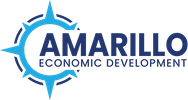“It is like the old saying, ‘you can’t see the mountain if you are standing on top of the mountain. You have to step off of the mountain and look, ‘oh look, there is a mountain.’ You do not see everything you have been through, when you are still experiencing it because you are too distracted. When I look back now, at the last five or six years, I am flabbergasted, but only if I step back and take a look.” Matt Darby, Speed Silks founder
Speed Silks creates custom jockey silks. These revolutionary, lightweight equine jockey uniforms. The fabric in which Speed Sillks’ uniforms are made, Aero Dimplex®, is used by competitive cyclists, speed skaters and jockeys all over the globe, from the U.S. and Puerto Rico to England and France to Singapore and Australia. Speed Silks uniforms have been worn by Kentucky Derby jockeys since its founding in 2014, including the jockey of Kentucky Derby winner Nyquist in 2016.
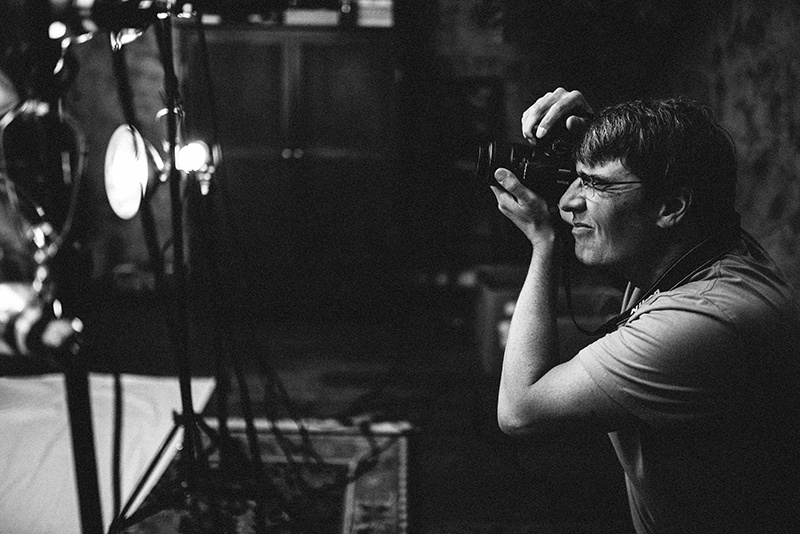 What was the origin of the idea that became Speed Silks?
What was the origin of the idea that became Speed Silks?
Matthew Darby: In 2006, I accepted a position in the marketing department at the American Quarter Horse Association, right here in Amarillo. Ninety-nine percent of the work I did was on the behalf of the racing department there. At the time, I did not know anything about horses; I did not know anything about horse racing, but I had been involved in sports media for a good chunk of my career. I was a broadcaster, newscaster and a sportscaster prior to [my position at the AQHA], so they thought I would be a good fit — you have to communicate with sports media all the time. Part of my job included going to horse races all over the country.
I had been there for maybe a month when they sent me to my first race with a coworker. He had been in horse racing his whole life. He was an oldtimer; he knew everything about the business.
By the time the second race was over that first day, I asked him, “Why are the jockeys wearing baggy uniforms?” He almost did not even understand the question I was asking, which gives you a pretty good idea of the mentality I am trying to overcome with this product. I said, “Why are they wearing baggy clothes? It is a speed sport.” In every other speed sport in the world, they are all trying to be as aerodynamically efficient as possible — speed skaters and cyclists, even runners, even speed sports in the water, swimming, bobsledding, everything.
He responded, “I don’t know.” He shrugged his shoulders, “It has always been like that, been like that for a hundred years.” I kept asking around. I would ask trainers and owners and jockeys and track personnel and everyone gave me the exact same answer: “I don’t know. They’ve always looked like that.”
I thought about it and thought about it and thought about it, and finally my wife convinced me to go ahead and pursue the idea to see if it could work. It took me about two, two-and-half years to go from “OK, I am going to do it” to “here is now a product that I can mass produce and sell.”
That is what Speed Silks is. It is a form-fitting, aerodynamically engineered jockey uniform. It is made out a special, technical fabric called Aero Dimplex, a patented technical fabric textured to reduce drag. It is used by competitive cyclists and speed skaters. All of the speed sports use aerodynamic fabric. Nobody else in the world is making [jockey] uniforms out of Aero Dimplex or any aerodynamic fabric for that matter — just us. Speed Silks are the only ones.
We sold our first unit almost three years ago; this August will be the end of our third year. That was to a guy right here in Texas, as a matter of fact. Since then, we have expanded across the globe. We are selling silks not just in North America. We sell silks in the U.S., Canada, Mexico. We sell them in the Caribbean, the U.S. Virgin Islands, Puerto Rico, Jamaica. We sell them in Europe, Ireland, Scotland, England, France, Sweden. We got a marketing agreement last year with a boutique horse racing retailer in Australia. They are now are marketing representatives in the Asian-Pacific region. We have sold a lot of silks now in Australia and New Zealand especially, but just in the last few weeks we have sold silks in Malaysia, Singapore, Hong Kong, Macau, Japan, Korea — all over the world now. Probably 20 percent of our business now is in Australia and New Zealand, which is fantastic.
We had a lot of resistance from the industry as we were developing the product. Like I said, it was a two, two-and-a-half year process to go from ‘this is my idea’ to ‘OK, let’s start the website and start selling product’. We had to go to tracks. I had a jockey friend in the quarter horse business. He was our model, so to speak, as we were developing prototypes for fit and utility.
Every once and awhile somebody in our business would find out what we were doing and look puzzled. I was actually told multiple times it was never going to work, nobody is ever going to buy this product, nobody wants to use anything different in this business; you are in a tradition-bound business, nobody wants to change, and it probably will not work anyway. There was a lot of resistance originally, I do not really hear that anymore, not at all. It is getting to the point where I am getting phone calls. I got one yesterday, the man said, “I was asking around about silks, because I need new silks and someone told me you are the man. You guys are making the best silks in the business right now.”
The whole world is paying attention to our product… Right now I am just focusing on growth.
Can you tell me about the process behind developing Speed Silks’ technology?
Matthew Darby: The process was surprisingly difficult and surprisingly complex. I did not know anything about garment manufacturing and design, which it turns out, is a really difficult and complex industry to work in. If I asked someone to make a T-shirt, they would have no idea what to do. I am wearing a T-shirt right now, but I still do not know how to make a T-shirt. To say make form-fitting jockey silks out of a technical fabric — that does not exist anywhere in the world. So I had to invent a new product; I had to invent a way to manufacture it, and then go find people, contractors and vendors that could do the work I needed them to do even though they had never done that kind of work before.
Aero Dimplex is a really, really finicky fabric. It is really hard to work with. It is very thin, flimsy, and stretchy. It is difficult to dye and it is difficult to assemble. Through a very expensive and time-consuming trial-and-error process, I had to figure out the best way to dye sublimate the fabric- the process we use to get color on the fabric is called dye sublimation. Most people have never heard of dye sublimation before, but it is becoming a fairly common way to dye synthetic fabrics now.
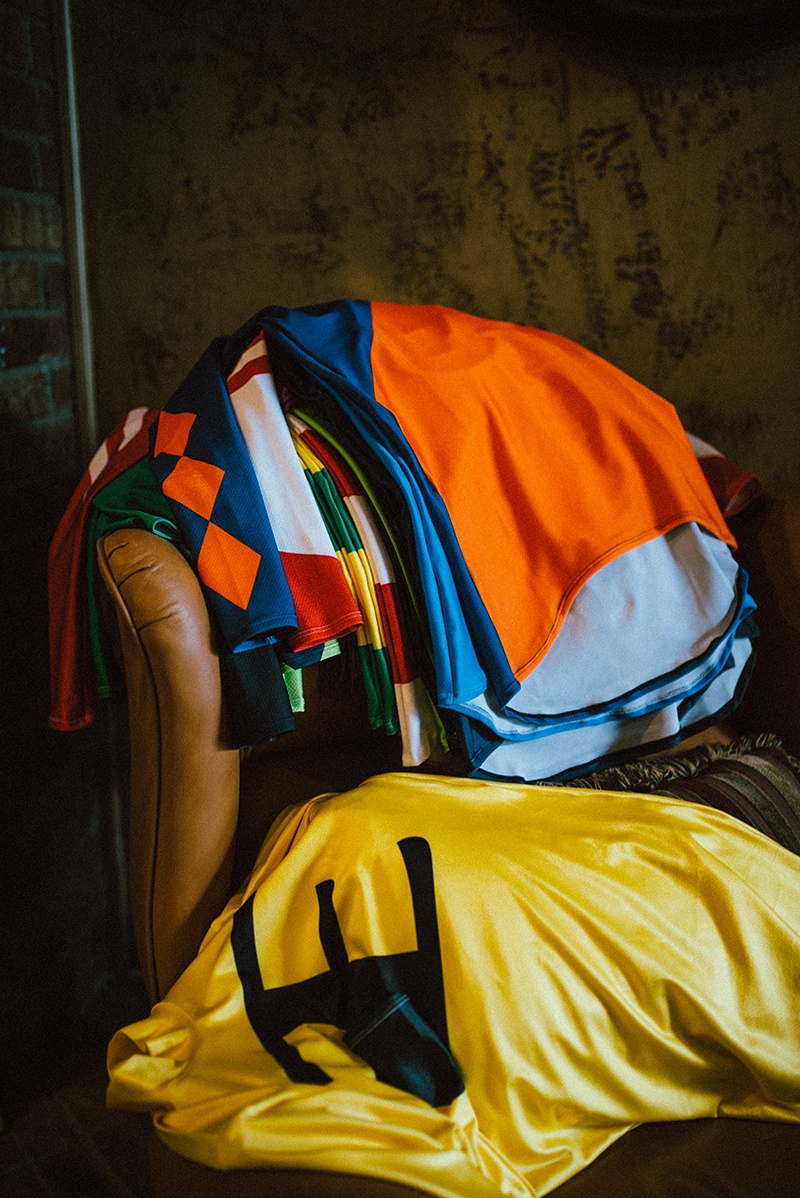 What it allows us to do is build the entire garment in a computer. I should probably back up. Part of the design process, to design the product itself, was to go find an industrial pattern designer. This person says, ‘ok, what do you want this garment to look like?’ I will show them what it is going to look like. Then they sit down and they design the puzzle pieces, the individual fabric panels that are then cut out of cloth and sewn together. That was our first prototype; and, of course, it was terrible. We tried on the jockey and he said, ‘Oh gosh, this is all wrong and this has to change.’ We did it again. That takes forever and that costs a lot of money.
What it allows us to do is build the entire garment in a computer. I should probably back up. Part of the design process, to design the product itself, was to go find an industrial pattern designer. This person says, ‘ok, what do you want this garment to look like?’ I will show them what it is going to look like. Then they sit down and they design the puzzle pieces, the individual fabric panels that are then cut out of cloth and sewn together. That was our first prototype; and, of course, it was terrible. We tried on the jockey and he said, ‘Oh gosh, this is all wrong and this has to change.’ We did it again. That takes forever and that costs a lot of money.
Then we get the second prototype; and now it is only kind of terrible, instead of completely terrible. Then you have to do it again. So that is an extremely difficult, time-consuming, costly process just to design a single product- we have not sold a single unit at this point. We are not even close to selling a unit.
What I do now is, looking at the final pattern, I overlay color onto those puzzle pieces. If you have blue stripes with red sleeves and yellow stars. I put all of that stuff onto the final fabric panels; unfolded puzzle pieces if you will. We dye sublimate all of that all at once onto a single sheet of Aero Dimplex fabric. That was a difficult thing to learn how to do, because the fabric is so difficult. Then the assembler, the cut-and-sew, the seamstress cuts out the puzzle pieces and puts them together. Even then, we had to go through a specialist cut-and-sew outfit in Minnesota that specializes in four-way stretch fabrics and athletic fabric. No one could handle this fabric. It is like sewing pantyhose; it is really hard. That is our process now.
I had to outsource all of those operations. Medium to long-term plans are to centralize all that production here in Amarillo. Mostly for reasons of quality control, but also because our turnaround will be faster. It might save a bit money, but that is not much a consideration. Cost will not be affected that much one way or another. So, it is mostly for quality control and turn around time. I like to be able to see everything as it is coming off the assembly line.
Most of the problems that we run into, where product is returned or replaced or refunded, are problems that could have been caught very early on in the process. I was not the one watching stuff come off the press, so I do not find out about it until it shows up… Four weeks after I placed the order in a big expensive box and they are all wrong. Now I have to pay and spend another four weeks getting it right and I have to tell the customer ‘sorry’. It is a disaster. We are trying to change all that.
Can you tell me more about the fabric you use, Aero Dimplex?
Matthew Darby: It is a patented fabric. It is dimpled, which is where the name comes from, to actively decrease aerodynamic drag. It is already used in a number of speed sports, most notably cycling because that is the biggest market for that type of fabric. There are cycling teams all over the country and they need it to be as aerodynamically efficient as possible. You also see it in other more arcane sports as well. Cycling is the big one. In fact, that is where I go the idea for the fabric originally.
It is made in Switzerland by one company. I have to import it in bulk from Switzerland; that is really expensive. That was like the eight hundredth thing on my list that I had to learn and become an expert on… was importing bulk textiles.
When you are starting your own business for the first time, unless it is something you already know really well, the learning curve can be incredibly steep. I did not know anything about anything when I started doing this. I knew about the horse racing business, but I did not know anything about silks. I did not know anything about garment design and manufacturing. I did not know anything about dye sublimation. I did not know anything about silks markings and colors. I did not know anything about designing my own website. I did not know anything about running a company and paying sales taxes. I did not know anything about bookkeeping and invoicing. I did not know anything about anything. So it was all uphill all the way. It was a really tough couple of years.
How did you persevere to get to the point you are at today?
Matthew Darby: I had help. There are people in my family and in my wife’s family that have areas of expertise that were perfect. My wife’s sister is a tax accountant. That is what she does for a living. Now, she is actually bookkeeper, too, at a small business. When I was putting together my business plan — which, again, I had never done before — she helped me put together all the financial tables for the business plan. It was difficult, but there were enough people in my life that helped me out, that helped me get things done. I would not have been able to do it on my own. I would have flopped completely. If it was just me, acting in a vacuum, it would not have worked.
Is it amazing to look back and see how far you have come?
Matthew Darby: My wife would say that often early on, especially around the time I was ready to fire up the company and start selling product. I would get frustrated because I would see this huge mountain in front of me that I thought could not be climbed. She would tell me I had already come so incredibly far. I never saw that, because, it is like the old saying, ‘you can’t see the mountain if you are standing on top of the mountain. You have to step off of the mountain and look, ‘oh look, there is a mountain.’ You do not see everything you have been through, when you are still experiencing it because you are too distracted. When I look back now, at the last five or six years, I am flabbergasted, but only if I step back and take a look.
Do you think your product could change the horse racing industry?
Matthew Darby: Ask me again in five years! I have no idea. We are doing brisk business right now, but the percentage of the market that we have penetrated right now is tiny. I have a few hundred customers, but there are tens of thousands of owners just in the U.S. and Canada. There are hundreds of thousands of owners worldwide. For me to say, ‘Look, I sold to five hundred people,’ it is nothing.
Our feedback has been overwhelmingly positive and that is great. We get a lot of business through word of mouth, which is vital. If your word of mouth is negative, it does not matter how good your advertising is. You have to have good word of mouth; this is a very close-knit industry. All the trainers know each other; all the owners know each other; all the jockeys know each other. You have to have a good product and good customer service; if you do, you get more calls. I get more calls from people who say ‘so-and-so told me about you’ than from people who say ‘I saw you online’, ‘I saw you in Trainer magazine,’ or ‘I came across you on Twitter.’
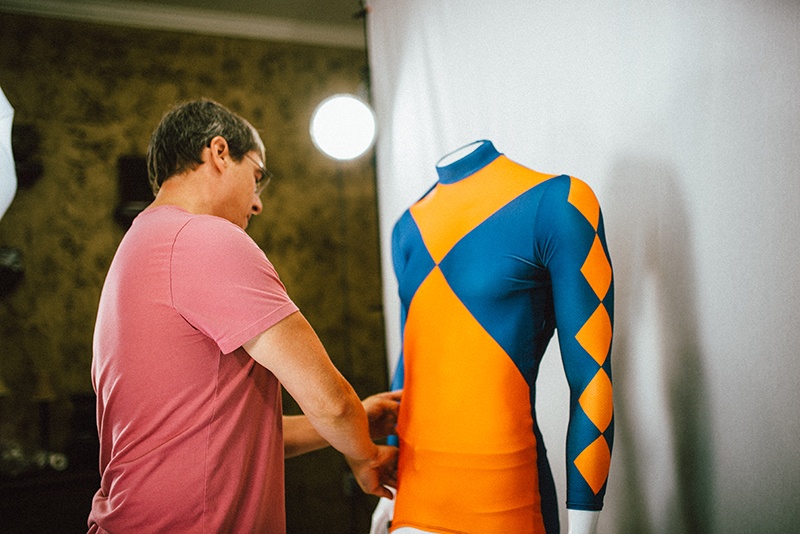 What has been your greatest challenge or failure to overcome in starting and managing your own company?
What has been your greatest challenge or failure to overcome in starting and managing your own company?
Matthew Darby: The greatest challenge is not knowing what you do not know. Every time you discover something else that you need to be an expert on, that you did not even know existed five minutes earlier, it can be so defeating, especially when it happens over and over again. If you are willing to learn, if you are willing to become an expert in 50 different things, than you can make it happen. That is the toughest part, knowing what you need to know. Not learning it necessarily, but knowing what you do need to learn.
It is tough to stick with sometimes, when you think ‘this is never going to work, because…’ I have thought that 100 different times over the last few years. You just have to put those thoughts aside and do it anyway. Nine times out of 10 you succeed.
People hear ‘jockey silks’ and they think it’s interesting, but it is an incredibly complex industry — not just the horse racing industry, but the garment manufacturing industry. Then all of the other things that go into owning and marketing your own business. That is a difficult enough process if you already know everything about your product and your industry that you need to know. When you do not, the difficulty goes up tenfold.
Almost exactly a year ago, I was panic-stricken, because, for whatever reason, around Christmas time business spiked. It was very unusual because winter is the dead time for North American horse racing and it was strictly domestic business. It never slowed down. In February, I had accepted a position at Panhandle PBS. I thought I had the time, but little did I know that in either April or May, I had been at Panhandle PBS for a few months, business spiked again. It doubled; it doubled in December and it doubled again in May. When I accepted the job, I had plenty of time during the day to do both, but then suddenly I did not. I was doing terribly at two different jobs, the one at the college and the one here, at Darby Racing Technology. That is when I had to hire my first employee.
Did you participate in the EnterPrize Challenge?
Matthew Darby: Yes, I did, and I did receive a grant. I was the winner of the 2013 challenge. That was a huge help. When you are given a bunch of cash… I did not realize that it does not make the process any easier. It makes things more affordable, but it also speeds everything up. Now you have this cash, so you can do 10 things this week instead of the one thing you were planning on before.
Was your experience at the WT Enterprise Center beneficial?
Matthew Darby: When we were still going through all the classes, before submitting our business plans. I have heard the same thing from a half a dozen people who have been through the program before, “The big benefit of attending classes, putting together a business plan, and participating in the EnterPrize challenge was not the money they gave me, but everything I learned about running a business.” They were 100 percent correct because, again, I didn’t know what I didn’t know. Even if that process had been someone telling me ‘you need to become an expert in the following things…’ that would have helped tremendously, but not only do they do that, they tell you how to become an expert, or they let you talk to an expert. It was the process of building that business plan and really learning how to map out the direction your business should go and why and how. If you can answer all those questions, you stand a much better chance at succeeding.
They are really teaching you everything you need to know about business; it just seems difficult because you have never done it before. The whole process was an eye-opener. That is where I started the never ending cycle of ‘I have bitten off more than I can chew.’
I came home one day after a class, and I called my wife and said, “Every time I do this, I think more and more that I cannot do what needs to be done.” They were using vocabulary I had never heard before. These were the classes I changed majors in college to avoid. I did not like math; I did not like business classes. Those were the classes I never thought I would need. If I would have been a broadcaster my whole life, I would have been right, but I am not a broadcaster anymore. I am a businessman.
What would you consider your greatest achievement?
Matthew Darby: It happened gradually for me. There was a single moment when my wife realized everything was going to work out. A few months ago, we went to New Orleans for the weekend to hang out with a client of mine that buys a bunch of silks. We watched the races at the Fairgrounds for the weekend. I met a ton of people. I got a lot of new business while I was there and it was really the first time Darcy had seen me in action, doing what I do on a daily basis. She works in an office and she does not get to see what I do all day. So, she was finally able to see me work. She saw the business I had gathered, all the new clients, and all of the orders I had received just sitting at the bar at a track. That was the moment she realized, ‘OK, this is going to work. We will not have to sell the house, we can still go out to eat, we can still go on vacation.’ That was her big epiphany.
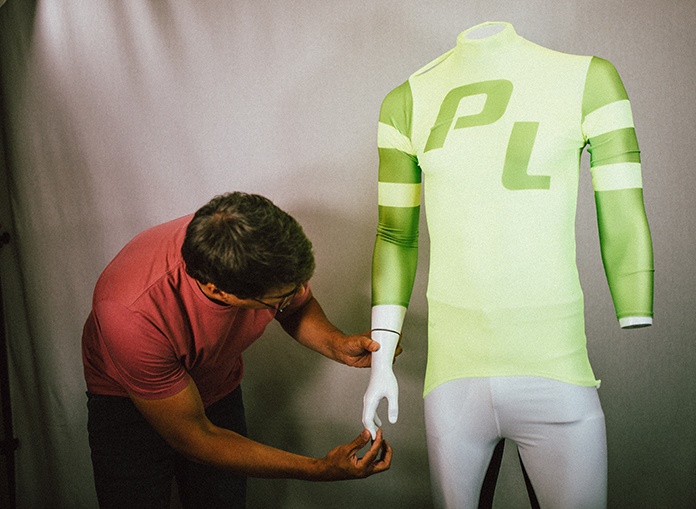 I knew that Speed Silks was going to work when I started getting repeat business, when owners and trainers who know what they are doing would call me up and say, ‘Hey, I love your silks, give me one more or five more.’ When I started getting repeat business, I think that was one of the biggest indicators that this was going to work. At the time, I still was not thinking about making money to pay the bills; I still had a full-time job. I was not able to quit my full-time job until less than a year ago. I should have left six months earlier than I did, but we wanted to be absolutely certain. When you are pulling in a guaranteed paycheck, and they are paying for your health insurance, and you have the 401k — I do not have any of those now. I mean, I have health insurance, but it is expensive. That is a scary step to take. That was the moment for me when I was completely cool with not having another job, just doing Speed Silks full-time, and allowing this to be my only source of income. Once I realized that was possible, everything became a lot easier. It was a turning point.
I knew that Speed Silks was going to work when I started getting repeat business, when owners and trainers who know what they are doing would call me up and say, ‘Hey, I love your silks, give me one more or five more.’ When I started getting repeat business, I think that was one of the biggest indicators that this was going to work. At the time, I still was not thinking about making money to pay the bills; I still had a full-time job. I was not able to quit my full-time job until less than a year ago. I should have left six months earlier than I did, but we wanted to be absolutely certain. When you are pulling in a guaranteed paycheck, and they are paying for your health insurance, and you have the 401k — I do not have any of those now. I mean, I have health insurance, but it is expensive. That is a scary step to take. That was the moment for me when I was completely cool with not having another job, just doing Speed Silks full-time, and allowing this to be my only source of income. Once I realized that was possible, everything became a lot easier. It was a turning point.
What is your vision for the future of Speed Silks?
Matthew Darby: I want to keep growing. My long-term goal is to no longer have to run the day-to-day operations of the business. Once I get to the point where I can hire people to do everything, I think that would be great. I still consider myself a small business. What I want to regard myself as is a company or a manufacturer. Right now, that is not me. I am working out of my home office. I have to convert my den into a photo studio once a week. Eventually, I will get to the point where I have to get office space. I am about to need to hire full-time employees and I cannot have a graphic designer show up at my house every day to help me design silks.
It is all just stages, steps on a ladder on the ladder and those are my next couple of steps. Further down the line, I want to be selling hundreds of sets of silks a month, instead of dozens of sets of silks a month; or being the biggest silks manufacturer in the world. I will start with the United States, which will be a lot easier to accomplish. This is not a centralized business. Silks in the U.S. are just sold by little mom-and-pop stores or Aunt Edna in Edmond, Oklahoma working out of her basement. If you were to buy a racehorse and you needed to get silks, you would probably call someone in the racing office of your track or one of your friends. They say, ‘Well, I have this lady… she has been doing this her whole life. Give her a call.”
I do not have that luxury. I do not live in a city with a track. I have to market myself as a national business, a global business. Nobody in the U.S. is doing that. It is a different story in a place like Australia altogether, which is my biggest non-US market. Ninety percent of the sales in Australia are manufactured by two companies. They are big boys and they want nothing to do with me moving into their territory. They made that well-known. They threw a lot of wrenches in when I was trying to get approved for sale in Australia. Now, we are competing directly with them over there.
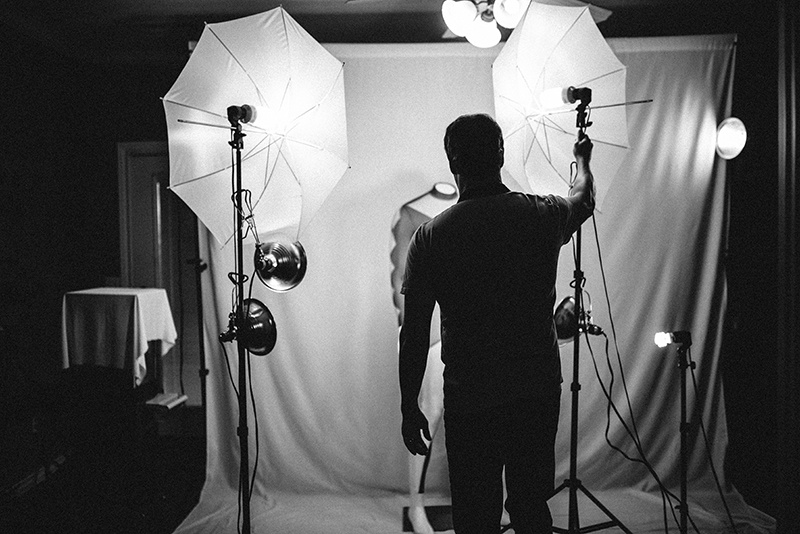 Do mom-and-pops make up most of your competition?
Do mom-and-pops make up most of your competition?
Matthew Darby: One of the reasons why this industry is interesting, as far as competition is concerned, I am kind of in a sweet spot. What I do requires a high level of technological know-how and manufacturing sophistication that Aunt Edna in Edmond lacks. She is pulling fabric off of rolls of nylon, pre-dyed nylon, so she pulls off some red, some white. She cuts the puzzle pieces out by hand, sews them together by hand to makes this balloony nylon jacket. I go through a completely different process. It requires computers, very specific dye sublimation hardware, very specific assembly techniques that requires a specialist.
It is the same process they would use for UnderArmour. From underneath, for the little mom-and-pops, there is a big barrier to entry. From above, you have UnderArmour and Nike; these businesses do not want to touch my product. It is completely custom… They do not want to do the designing part of the process. They do not want to sell just one set of silks, even if they sell them for $200 or $300. They would rather sell 500,000 gray T-shirts. They have no interest in my business. I found a way to manufacture a mass-produced product on a very small scale.
It is a tradition-bound industry; people naturally resist change. They are very old-school and superstitious. The silks manufacturing industry grew around that idea. It has not been as tough-a-nut to crack as I thought it would be, but everybody told me it would not work. I am glad I did not listen. When I was in my early stages, a lot of people told me it would never work. A lot of people told me that very specific parts of my business plan or product would never work. They have all been wrong.
What are you working on now that excites you?
Matthew Darby: I do not know that excitement is something that I am feeling right now. It is mostly concern because I am still trying to expand. When that is your goal, you never seem to be expanding fast enough. The work order I am turning in today actually has one or two units fewer than the work order I turned in last week. I understand that you do not gauge growth on a week-to-week basis, but that consumes me right now. Right now, there is not a high level of excitement. There was a high level of excitement when I had a chance to win the Triple Crown, but when it comes to the day-to-day of making your business grow and succeed, there is not a high level of excitement.
I am excited about growth in the Asian-Pacific region. That is coming along really well. Again, it is still maybe 20 percent of our total business, but I could easily see it being a third of our business, or a half of our business a year from now. The United States is the only developed country in the world in which horse racing is contracting. Everywhere else in the world it is growing and becoming more popular.
One of the markets we sell to now is Hong Kong. The track in Hong Kong is called the Hong Kong Jockey Club. The Hong Kong Jockey Club handles more money on a Wednesday than continent North America does on a Saturday. That is a market we are definitely very happy to have broken into. I shipped out a couple of silks to Macau this week, right across the bay from Hong Kong. It is a market that feeds the Hong Kong Jockey Club.
We are expanding into Europe now. We do no active marketing in Europe, but every now and then I will get a call from someone in France or Great Britain that heard about our product and wants to buy our product. That is very encouraging.
After the past years of your life that have been consumed by Speed Silks, do you have a newfound passion for horseracing?
Matthew Darby: Even when I worked at AQHA, when I had to pay attention to horse racing every day, it was just a job. It was somebody else’s horses. When it is your customers, wearing and therefore representing your product, you are a lot more interested in how they do. Every single day, now, I look at race results. Absolutely, I know the trainers a lot better, the jockeys a lot better, and the owners a lot better. The business is a lot more fascinating when you are in the business.
How has operating from Amarillo impacted your company?
Matthew Darby: Texas is a very pro-business state. If I was trying to operate out of New York or California; it would be a lot more difficult. Everything is much more regulated and highly taxed.
Living in Amarillo is beneficial to me because I ship all over the country. I ship domestic and being centrally located is great. Everything gets there in two days, and it is not that difficult to ship.
Since Speed Silks is basically an internet business and all of the manufacturing and design is done off site, there is no downside to operating from Amarillo. And, I like it here. I have roots. My wife has roots here, too. It is a good place to live.
Want To Learn More About Speed Silks?
Visit speedsilks.com to learn more about the company.
Photos courtesy of Kaili Herr Photography
